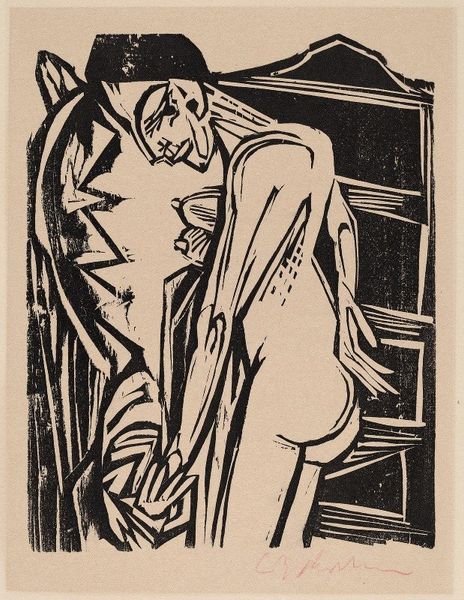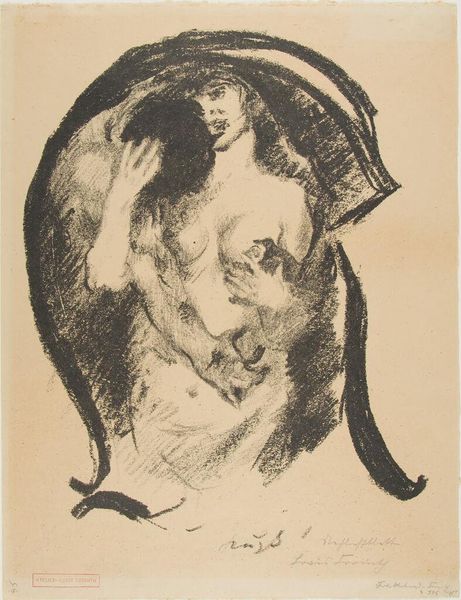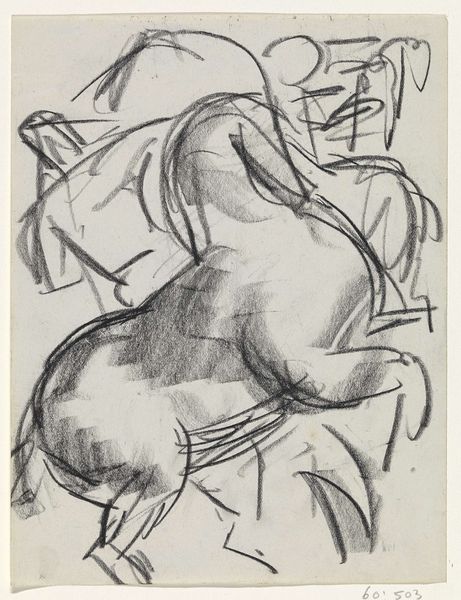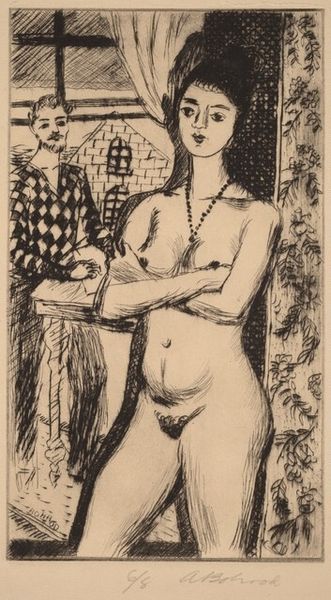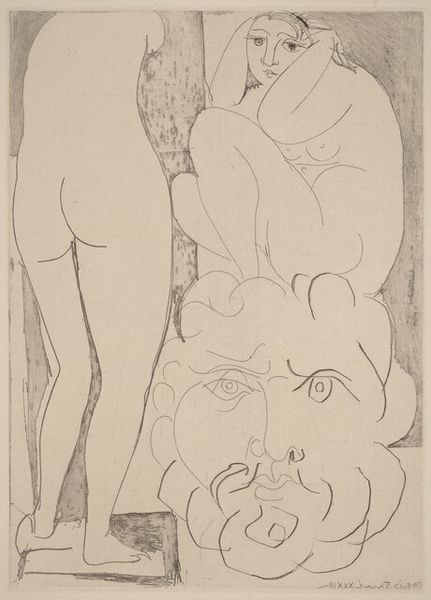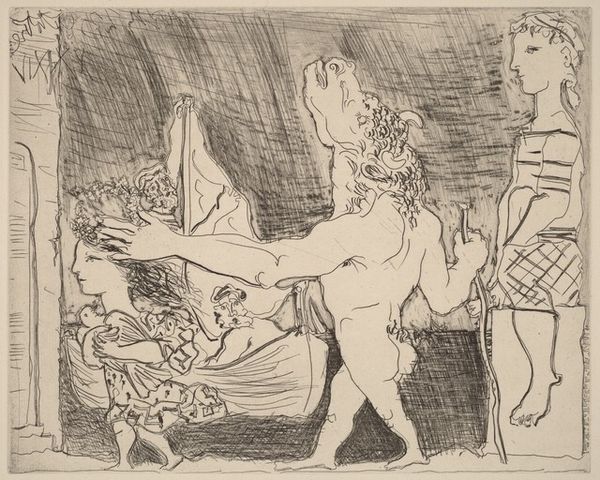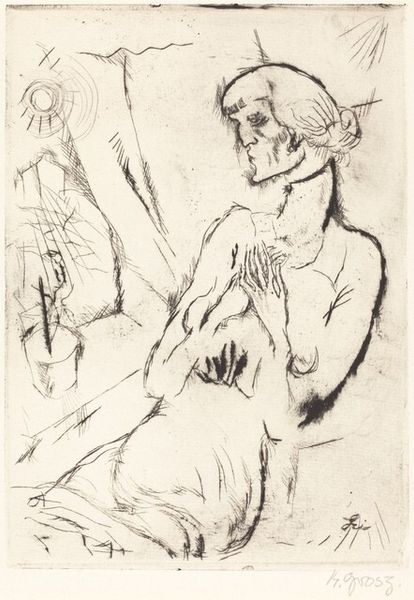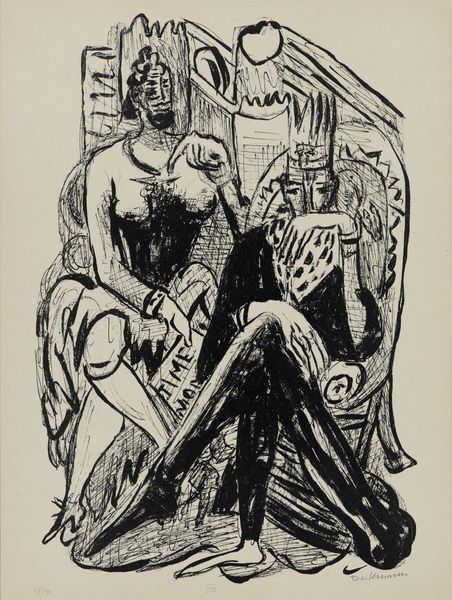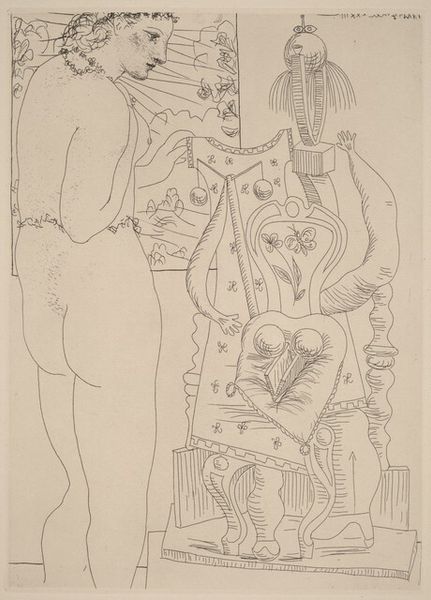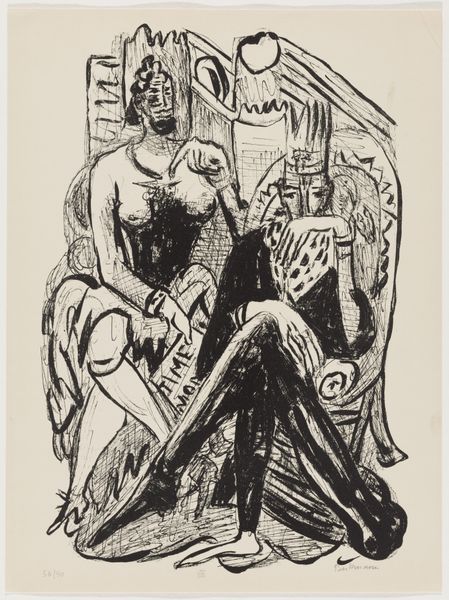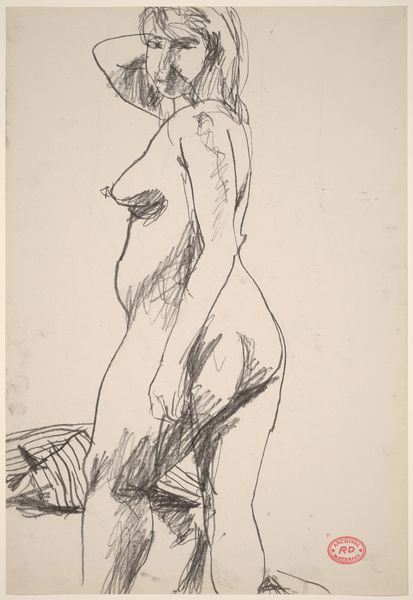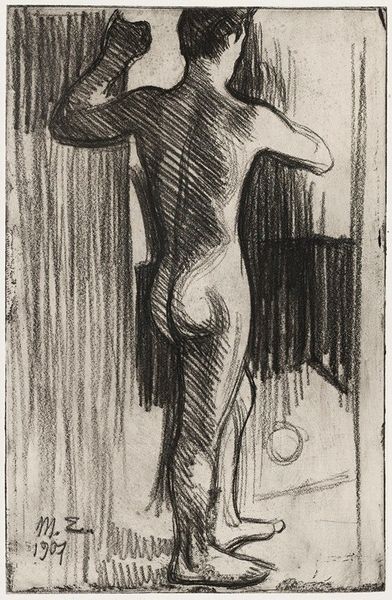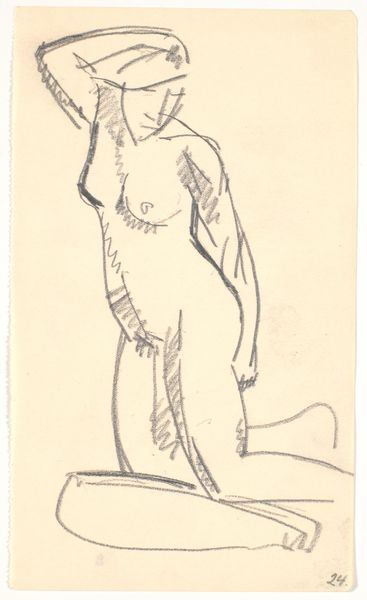
drawing, print, etching, ink
#
portrait
#
drawing
# print
#
etching
#
figuration
#
ink
#
expressionism
#
nude
#
modernism
Dimensions: plate: 27.5 × 23.7 cm (10 13/16 × 9 5/16 in.) sheet: 45.3 × 28.7 cm (17 13/16 × 11 5/16 in.)
Copyright: National Gallery of Art: CC0 1.0
Curator: Let's turn our attention to "Corseted Woman at a Mirror," a 1922 etching by Paul Kleinschmidt. What's your initial impression? Editor: Stark. There's an angularity and rawness in the linework that creates a sense of unease. The hatching is intense, heightening the tension in the confined space. Curator: I agree. The etching medium enhances the sharp, almost biting quality of the lines. The corset itself is a potent symbol. In the 1920s, it signified both restriction and a certain kind of liberated femininity. It suggests an attempt to conform, a performative act for the mirror's gaze. Editor: The reflection offers a bizarre counterpoint. The woman’s expression is… unsettlingly cheerful, given the constraints implied by the corset. The rigid geometry of the corset contrasts with the unruly hair, creating visual dissonance. Curator: That contrast is crucial. The mirror image could be seen as a societal reflection—a constructed persona meant to mask underlying anxieties and pressures. Consider the historical context: post-war Germany, economic turmoil, shifting gender roles. The etching captures a specific moment of flux. Editor: Do you see the figure herself as an emblem of this change, caught between past conventions and an emerging modernity? Curator: Absolutely. The etching evokes those tensions. It becomes a study of fragmented identity, performed femininity and the often-uncomfortable negotiation between the individual and the collective expectations that come from her societal reflection. Editor: This piece stays with you, lingering in your mind like the feeling of constraint itself. Curator: Exactly. Kleinschmidt makes us think about the symbols we perpetuate.
Comments
No comments
Be the first to comment and join the conversation on the ultimate creative platform.
